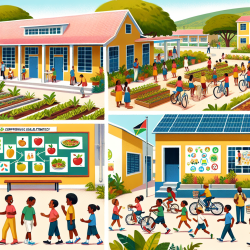Introduction
In the heart of bustling cities lie slums—areas characterized by overcrowding, inadequate infrastructure, and limited access to basic services. For children growing up in these environments, the challenges are immense, affecting their health, education, and overall development. The research article "Slums Are Not Places for Children to Live" sheds light on these challenges and offers insights into interventions that can create positive outcomes for these children.
Understanding the Impact
Children in slums face a dual burden: the immediate effects of poor living conditions and the long-term impact on their development. Factors such as lack of clean water, inadequate sanitation, and limited access to healthcare contribute to high rates of infectious diseases and malnutrition. Moreover, the absence of quality education and safe recreational spaces hampers their cognitive and social development.
Data-Driven Interventions
The research highlights successful interventions that have improved health outcomes for children in slums. These interventions include:
- Infrastructure Improvements: Enhancing access to clean water, sanitation, and safe housing can significantly reduce disease transmission and improve overall health.
- Community Health Programs: Training community health workers to provide basic healthcare and health education empowers local communities to address health issues proactively.
- Educational Initiatives: Establishing accessible and quality educational facilities helps bridge the educational gap and fosters cognitive development.
Encouraging Further Research
While existing interventions have shown promise, there is a continuous need for research to identify and implement innovative solutions tailored to the unique challenges of each slum area. Practitioners are encouraged to delve deeper into understanding the socio-economic and cultural dynamics that influence child health and development in these settings.
Conclusion
Transforming the lives of children in slums requires a concerted effort from practitioners, policymakers, and communities. By leveraging data-driven interventions and fostering a culture of continuous research, we can create environments where children not only survive but thrive. To read the original research paper, please follow this link: Slums Are Not Places for Children to Live.










